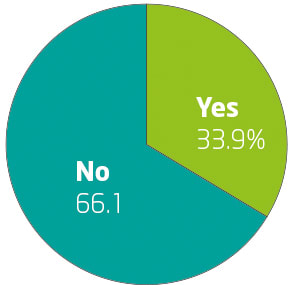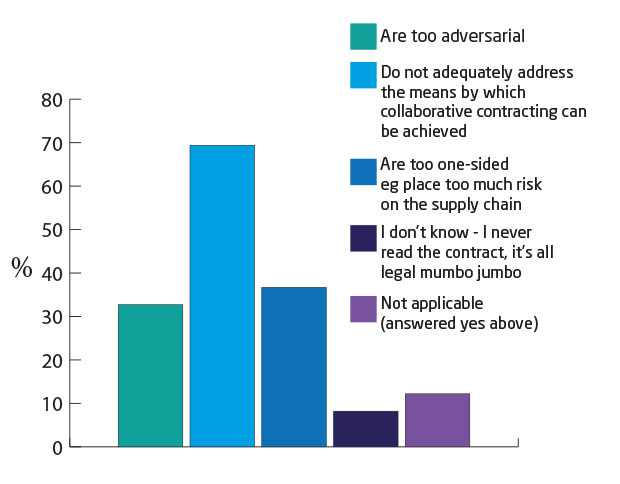Just two thirds of respondents believe the industry is capable of achieving the government’s target of Level 2 BIM on all centrally-procured contracts by 2016, a report by law firm Pinsent Masons has revealed.
[Corrected Feb 20th: The opening lines of our story was incorrect while the second line is correct: 64% of respondents to this survey thought that the Level 2 BIM target was unachievable by 2016].
The survey into the use of BIM canvassed experts from 70 organisations across the infrastructure industry and found that 63.9% thought the 2016 target was unachievable.
In addition, around a third of experts (66.1%) said existing forms of contract and approaches to contracting were inappropriate for the BIM-enabled world. Of these, 69.4% said this was because existing contracts or methods of contracting failed to adequately address collaboration, 36.7% said they are too one-sided and place too much risk on the supply chain and 32.7% said they are too adversarial.
Commenting on the report’s findings, Chris Hallam, partner in Pinsent Masons’ projects, construction and engineering team, said: “This may not make pleasant reading for the publishers of standard form contracts, particularly the NEC and PPC2000 forms, which are generally considered to be at the more collaborative end of the spectrum. We believe this is evidence of an industry crying out for a different approach and for contractual arrangements that work in a collaborative environment.”
Do you think that the existing forms of contract and the existing approaches to contracting used in the market are appropriate in a BIM-enabled world?

If you answered ‘no’ to the question above is this because the existing contracts forms/methods of contracting (tick as many as you consider relevant)

Source: Pinsent Masons
He added: “Many believe that the ‘alliancing’ model, a ‘no-fault’ based procurement route where parties share in the success or failure of a project is where the industry should be heading. Indeed, several sectors, including rail and utilities, have embraced alliancing, and we are starting to see other sectors dip their toes in the water.”
Almost all respondents were aware of the government’s mandate on Level 2 BIM, and roughly two thirds (66.7%) said that on a scale of 1 to 10, the adoption of BIM and BIM related processed ranked above 8 in terms of its importance to current or pending projects.
However, 27.4% of experts said the most significant barrier to the industry achieving Level 2 capability was the absence of a truly collaborative approach, while 14.5% blamed insufficient experience of BIM within their company.
Identifying key areas of risk for BIM within their business, around a half of respondents (51.6%) were concerned about the integrity of information input into models and 46.8% were concerned about having good work processes, for example protocols, in place.
In terms of the most significant benefits BIM can offer the construction sector, 63% said improvement in the design production process of a construction project; 57% said risk mitigation in terms of better on-site clash detection and/or health & safety risk deduction; and 46% said greater clarity and transparency for clients.
Martin Roberts, partner in Pinsent Masons’ construction advisory and disputes group, said: “The benefits are clear and the construction industry acknowledges that it can achieve better efficiency and transparency on infrastructure projects. It is however inevitable that there will be some concern when adopting different approaches, particularly one which by necessity requires greater collaboration and connectivity between members of the construction team. But the potential benefits that can be gained from BIM should far outweigh the dangers, and in the round will probably operate to reduce the overall risk profile.”













